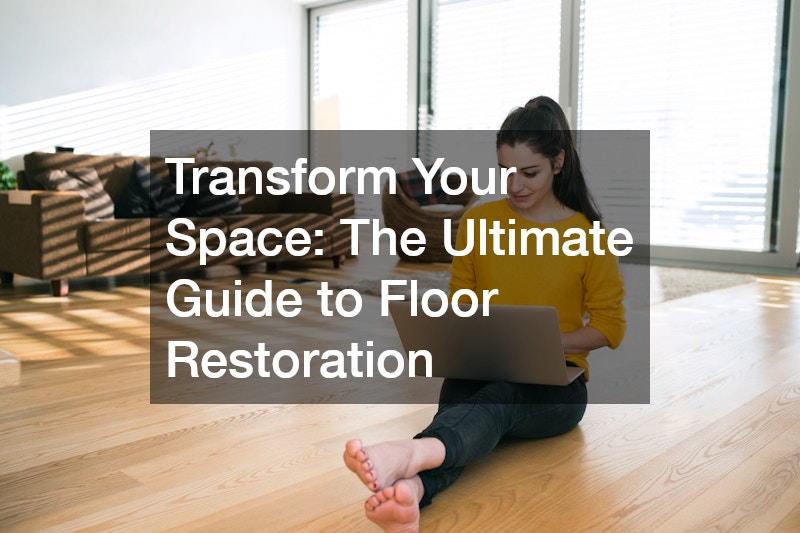Floor restoration is an essential aspect of home improvement that can significantly elevate the aesthetic and functional quality of your living space. Whether you’re dealing with scuffed hardwood, aging laminate, or cracked tiles, revamping your floors can breathe new life into your home. This guide will walk you through the vital steps, ensuring a rewarding and less daunting process.
Understanding the Importance
The impact of immaculate floors on the overall ambiance of a room is often underestimated. Restored floors not only enhance the visual appeal but also add to the property’s value. Restoration can also be a reflection of your commitment to maintaining a well-kept living environment, making a significant difference in the long run.
Deteriorating floors not only look unsightly but can also pose safety hazards, such as tripping. Minor imperfections, if ignored, can evolve into costly repairs. Regular restoration of your floor, therefore, ensures both the aesthetic and safety aspects are upheld.
It allows you to redefine your space with new styles or materials. This process can serve as a perfect incentive to adopt greener alternatives, like sustainable hardwood or eco-friendly sealants. With a wide range of materials available, floor restoration becomes a creative endeavor to personalize your home.
The Process
Beginning with an assessment of your current floor status helps in devising an effective restoration plan. Inspect for damages such as dents, scratches, and discolorations to ascertain the proper method of restoration. Consulting professionals or conducting adequate research ensures that you’re equipped with the right knowledge and tools for the task.
The next step involves thorough cleaning to remove dirt, grime, and any wax buildup. Specialized cleaning agents or homemade mixtures, depending on the floor type, offer a deep cleanse without causing damage. Skipping this cleaning phase can result in poor restoration outcomes, as dirt layers beneath newly applied finishes can disrupt adhesion and longevity.
Once cleaned, sanding may be required for certain floor types such as hardwood. This process levels the floor surface and removes minor imperfections, preparing it for a new finish. Choosing the right grit size for sanding and handling power equipment carefully, or employing a professional, can make all the difference.
Choosing the Right Finish
Selecting an appropriate finish is a vital step in floor restoration, as it affects both the appearance and durability of the floor. Options range from glossy to matte finishes, each suiting different lifestyle needs and room aesthetics. Consider the room’s function and the foot traffic it endures when choosing the right finish.
Oil-based polyurethanes are popular for their durability, although they tend to yellow over time. Alternatively, water-based polyurethanes are less odoriferous and dry quickly, offering a more natural look. Evaluating the pros and cons of each finishing option is crucial in delivering a satisfying restoration that meets all your expectations.
An emerging trend in floor restoration is opting for eco-friendly finishes, which minimize harmful emissions. Examples include sealants derived from plant oils or waxes and low-VOC polyurethanes. These choices not only align with sustainable practices but also reduce indoor air pollution, benefitting your household’s health.
Care and Maintenance
The longevity of restored floors hinges significantly on how well they are maintained post-restoration. Establishing a routine cleaning schedule using appropriate products ensures the finish remains intact and unblemished. Frequent sweeping or vacuuming prevents abrasive particles from scratching surfaces.
Placing protective pads under furniture and avoiding high heels or stiletto shoes indoors can mitigate potential damage. Regularly checking for signs of wear and addressing them promptly prevents minor issues from escalating. This proactive approach extends the lifespan of the floor restoration.
Investing in floor mats at entryways can act as the first line of defense against dirt and grime. Adequate humidity control also plays a significant role in preserving the condition of certain floor types. Together, these practices contribute to maintaining the pristine appearance and functionality of restored floors.
Restoration is more than a home improvement project; it is an investment in enhancing your living environment’s beauty and safety. With informed choices and a systematic approach to restoration, any homeowner can transform their space into an inspiring and functional area. Embrace the art of floor restoration and enjoy the remarkable transformation it brings to your home.
Whether utilizing professional services or undertaking a DIY project, understanding each step’s importance is crucial. The right materials, finishes, and maintenance strategies ensure the longevity of your restored floors. Ultimately, with attentive care, your restored floors will serve as a testament to your dedication to maintaining a beautiful and welcoming home.
.

